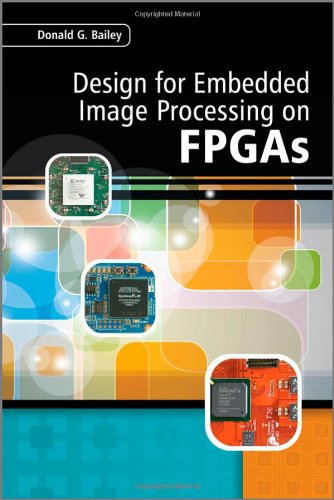Design for Embedded Image Processing on FPGAs pdf free
Par andrews byron le mercredi, novembre 16 2016, 21:22 - Lien permanent
Design for Embedded Image Processing on FPGAs by Donald G. Bailey


Design for Embedded Image Processing on FPGAs Donald G. Bailey ebook
Publisher: Wiley-Blackwell
Format: pdf
ISBN: 0470828498, 9780470828496
Page: 0
4DSP press release and pictures about the new VID300 PMC expansion card created developers of imaging applications requiring high performance video image and compression FPGA boards. Introduction to HDL Code Generation from MATLAB; MATLAB to Hardware Workflow; Example MATLAB Algorithm; Example MATLAB Test Bench; HDL Workflow Advisor; Design Space Exploration and Optimization Options; Best Practices; Conclusion. Low-cost dual Altera Cyclone III devices are closely coupled to fast on-board DRAM memory resources, providing the most efficient hardware compression available for the embedded image signal processing market. Embedded Systems: Hardware, Design and Implementation (1118352157) cover image. -Determining the image processing capabilities of the Raspberry Pi. -Get a webcam working with the Raspberry Pi, accessed via python and C (most likely using openCV). Design, implement, and integrate computer vision algorithms and prototypes. Other Available Next, it focuses on the technologies associated with embedded computing systems, going over the basics of field-programmable gate array (FPGA), digital signal processing (DSP) and application-specific integrated circuit (ASIC) technology, architectural support for on-chip integration of custom accelerators with processors, and O/S support for these systems. Experience in aerial video analysis, robotic vision and embedded image processing (FPGA, DSP, or smartphone). Implement image processing algorithms. Coordinate design efforts with FPGA and hardware engineers to develop solutions. Design, implement, debug, test and maintain embedded software systems. Introduction to HDL Code Generation from MATLAB. If you are using MATLAB to model digital signal processing (DSP) or video and image processing algorithms that eventually end up in FPGAs or ASICs, read on.